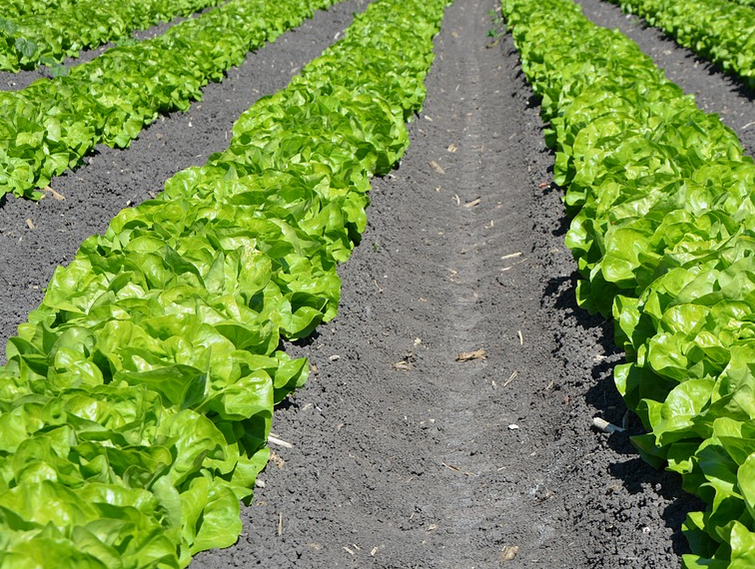Action of different enzymes on lettuce (Lactuca sativa L.) seed germination - Asteraceae
DOI:
https://doi.org/10.20873/jbb.uft.cemaf.v3n3.pimentelKeywords:
hydrolysis, enzymatic solution, alcalase, protease, pectinasaeAbstract
Seed germination involves the use of different enzymes for metabolism. The aim of this study was to evaluate the effect of different commercial enzymes on germination of lettuce seeds. Lettuce seeds were immersed in a solution of 300 mL distilled water and 5.0 mL enzyme solution during one hour. The treatments consisted of the commercial enzyme solutions: (1) Alcalase® and Celluclean® (purpose catalyze hydrolysis of peptide bonds and bonds of beta 1,3 and 1,4 glucan present in the cellulose, respectively), (2) Pectinex® (purpose dilutes pectin, releasing sugars), (3) Alcalase® (purpose to catalyze peptide bonds), (4) Pectinex® and Alcalase® (purpose to catalyze peptide bonds and to release sugars), (5) Alcalase® and Ban® (purpose to catalyze peptide bonds and hydrolysis of bonds alpha 1,4 - glucosidic forming dextrin preferably as product), (6) Spirizyme® (glucoamylase enzyme: glucan 1,4 alpha-glucosidase) and (7) control (distilled water free of enzymes). After treatment with the enzyme solutions seeds were sown in Petri dishes containing filter paper or soil as a substrate, both saturated with distilled water. The seeds of all treatments germinated in four days after seeding. The percentage of seed germination on filter paper showed no significant differences between the treatments, but the germination percentage showed statistical differences when germinated in the soil. The highest percentages of germination in the soil were in the control treatment (96.6%) and in the treatment with Pectinex® and Alcalase® (81.6%). Industrial enzymes application in lettuce seeds does not increase the speed and percentage of seed germination.
References
Alcântara, B. K.; Brondani, G. E.; Gonçalves, A. N.; Almeida, M.; Azevedo, R. A. (2011), Methods of asepsis for in vitro establishment and germination of Eucalyptus grandis. Journal of Biotechnology and Biodiversity, 2, 7-13.
Bisognin, D. A.; Silva, A. L. L.; Horback, M. A.; Girotto, J.; Barriquello, C. J. (2008), Germinação e propagação in vitro de porongo. Ciência Rural, 38, 332-339.
Borthwick, H. A.; Robins, W. W. (1928), Lettuce seed and its germination. Hilgardia, 3, 275-304.
COSTA, J. L.; SILVA, A. L. L.; SCHEIDT, G. N.; LEMUS, E. A. E.; SOCCOL, C. R. (2010), Estabelecimento in vitro de sementes de pinhão manso (Jatropha curcas L.) - Euphorbiaceae. Caderno de Pesquisa Série Biologia, 22, 5-12.
Cruz, C. D. (2001), Programa Genes: versão Windows; aplicativo computacional em genética e estatística. Viçosa: UFV, Imprensa Universitária, 648p.
Levitt, J. (1974), Introduction to plant physiology. 2.Ed. Saint Louis: The C.V. Mosby Company, 447p.
Kumari, G. J.; Reddy, A. M.; Naik, S. T.; Kumar, S. G.; Prasanthi, J.; Sriranganayakulu, G.; Reddy, P. C.; Sudhakar, C. (2006), Jasmonic acid induced changes in protein pattern, antioxidative enzyme activities and peroxidase isozymes in peanut seedlings. Biologia Plantarum, 50, 219-226.
Maity, S.; Banerjee, G.; Roy, M.; Pal, C.; Pal, B.; Chakrabarti, D.; Bhattacharjee, A. (2000), Chemical induced prolongation of seed viability and stress tolerance capacity of mung bean seedlings. Seed Science and Technology, 28, 155-162.
Matovina, V. B. and Blake, T. J. (2001), Seed treatment with the antioxidant Ambiol enhances membrane protection in seedlings exposed to drought and low temperatures. Trees, 15, 163- 167.
McCue, P.; Zheng, Z.; Pinkham, J. L.; Shetty, K. (2000), A model for enhanced pea seedling vigour following low pH and salicylic acid treatments. Process Biochemistry, 35, 603-613.
McDonald, M. D. and Khan, A. A. (1983), Acid scarification and protein synthesis during seed germination. Agronomy Journal, Madison, 2, 111-114.
Rego, S. S.; Ferreira, M. M.; Nogueira, A. C.; Grossi, F.; Sousa, R. K.; Brondani, G. E.; Araujo, M. A.; Silva, A. L. L. (2011), Estresse Hídrico e Salino na Germinação de Sementes de Anadenanthera colubrina (Veloso) Brenan. Journal of Biotechnology and Biodiversity, 2, 37-42.
Ripado, M. F. B. (1993), A cultura da alface. Lisboa: Livraria Popular Francisco Franco, p.14, 21-23.
Silva, A. L. L.; Bisognin, D. A.; Barriquello, C. J.; Ritter, C. E. L. (2005), Germinação in vitro de sementes de mogango (Cucurbita pepo L.) - Cucurbitaceae. Ciência e Natura, 27, 19-28.
Sung, Y.; Cantliffe, D. J.; Nagata, R. T. (1998), Seed developmental temperature regulation of thermotolerance in lettuce. Journal of the American Society for Horticultural Science, 123, 700-705.
Sung Shim, I; Momose, Y.; Yamamoto, A.; Kim, D.; Usui, K. (2003), Inhibition of catalase activity by oxidative stress and its relationship to salicylic acid accumulation in plants. Plant Growth Regulation, 39, 285-292.
Wahid, A. and Shabbir, A. (2005), Induction of heat stress tolerance in barley seedlings by pre- sowing seed treatment with glycinebetaine. Plant Growth Regulation, 46, 133-141.

Published
How to Cite
Issue
Section
License
Copyright (c) 2024 - Journal of Biotechnology and Biodiversity

This work is licensed under a Creative Commons Attribution 4.0 International License.
Authors who publish with this journal agree to the following terms:
Authors retain copyright and grant the journal right of first publication with the work simultaneously licensed under a Creative Commons Attribution License (CC BY 4.0 at http://creativecommons.org/licenses/by/4.0/) that allows others to share the work with an acknowledgement of the work's authorship and initial publication in this journal.
Authors are able to enter into separate, additional contractual arrangements for the non-exclusive distribution of the journal's published version of the work (e.g., post it to an institutional repository or publish it in a book), with an acknowledgement of its initial publication in this journal.
Authors are permitted and encouraged to post their work online (e.g. in institutional repositories or on their website) prior to and during the submission process, as it can lead to productive exchanges, as well as earlier and greater citation of published work (Available at The Effect of Open Access, at http://opcit.eprints.org/oacitation-biblio.html).


